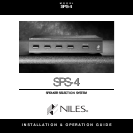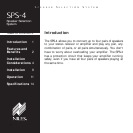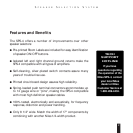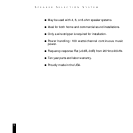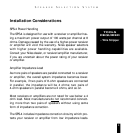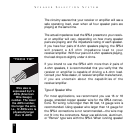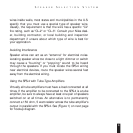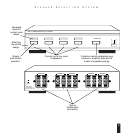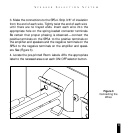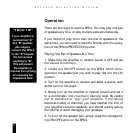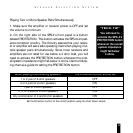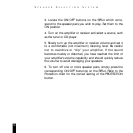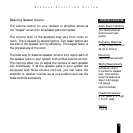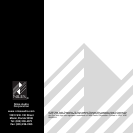
wires inside walls, most states and municipalities in the U.S.
specify that you must use a special type of speaker wire.
Usually, the requirement is that the wire has a specific "CL"
fire rating, such as "CL-2" or "CL-3". Consult your Niles deal-
er, building contractor, or local building and inspection
department if unsure about which type of wire is best for
your application.
Avoiding Interference
Speaker wires can act as an "antenna" for electrical noise.
Locating speaker wires too close to a light dimmer or switch
may cause a "buzzing" or "popping" sound to be heard
through the speakers. If you must locate the SPS-4 wiring
near electrical devices, route the speaker wires several feet
away from the electrical wiring.
Using the SPS-4 with Tube-Type Amplifiers
Virtually all tube amplifiers must have a load connected at all
times. If the amplifier to be connected to the SPS-4 is a tube
amplifier, be sure to always have at least one pair of speakers
switched on at all times. An alternative is to permanently
connect a 150 ohm, 5 watt resistor across the tube amplifier's
output in parallel with the SPS-4. See (Figure 1) on next page
for hookup diagram.
6
S
PEAKER
S
ELECTION
S
YSTEM



